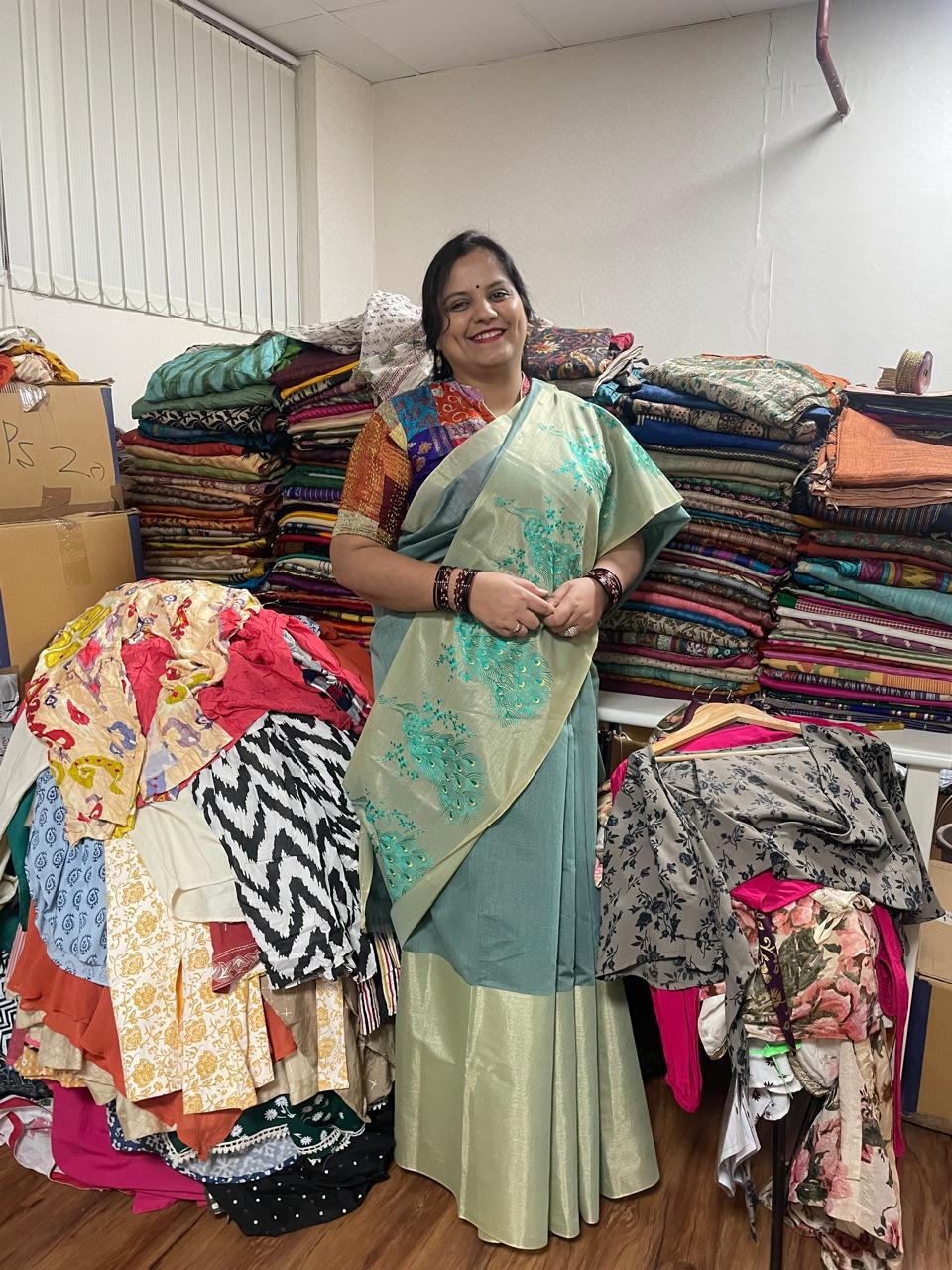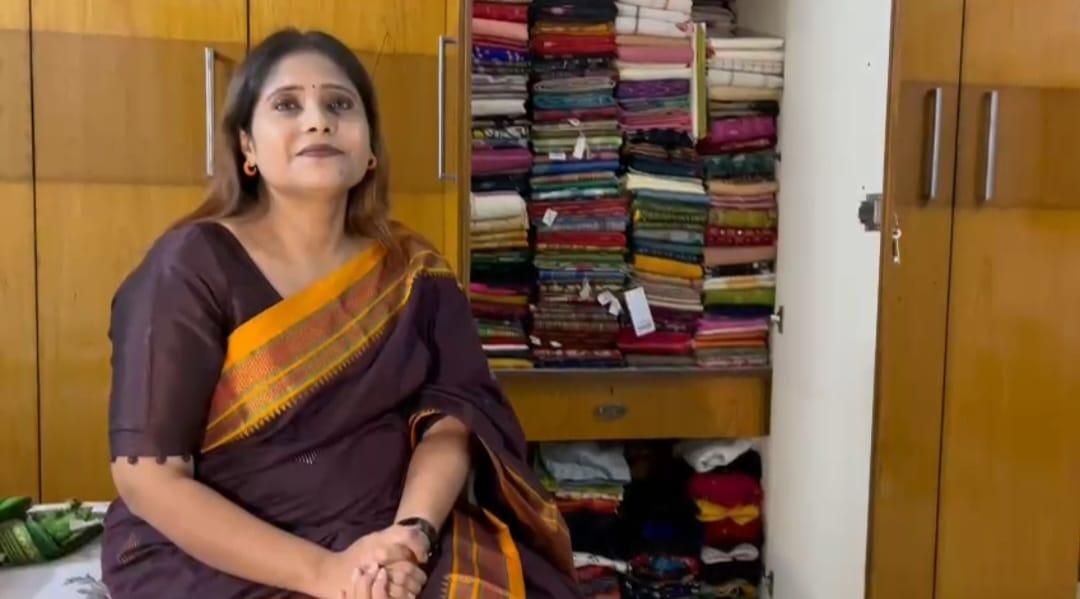Sarees are an emotional product passed down through generations holding testament to time evoked through occasions, weddings and gifts on special days. Sarees have successfully attained the crown of a hero product in 70% of Indian women’s closet that their obsession to hoard them surpasses pragmatism.
Saree is an aspirational product with least repeat use cases where a considerable amount remains stuck without any return with depreciating value. Each year approximately $6 Billion worth of sarees are bought and sold in India where 33 crore women out of 67 crores spend on an average of Rs.5,000 each year to buy sarees which stay folded in a series of collections collecting dust in the closets.
Each Indian closet is overflowing with sarees yet women complain that they have nothing new to wear. Reportedly out of every 10 Indian households in India, 8 households own 3 sarees on an average making it a 60,000 crore worth market in India. Any festival or wedding season has sarees accounting for 41% of the total garment purchased in India.
While there is a lot of chatter around preserving old grand mothers sarees as pieces of heirloom oozing nostalgia and emotions however, mindless overconsumption out of impulsive shopping is leaving consumers rethinking how to clean up their closet to make room for new clothes and if that process pays off then it would act as a motivator for consumers to use used clothes.
The pre-owned apparel market in India is booming, projected to grow to $9.1 billion by 2032. With sarees being culturally vital therefore it is expected to hold a significant share of this high-growth, eco-conscious market.
While the key driving factors could be attributed to affordability, uniqueness, cultural significance, sustainability and evolving social media platforms.
Currentlythrifting of sareesis happening at anunstructured, informalmode mostly throughpersonal sellingviaFacebook marketplaceandyet it showcases a growing trend among informed Indian women to turnidle collectionsintoreal earningsthrough bothonlineandoffline presence.
Slowly a movement is growing where saree ownership is weaving a fabric of change through empowerment, storytelling, and sustainability.
Why Sarees Are Perfect for Side Hustles:
High demand and cultural significance: India has around 72+ different kinds of sarees from 28 states and 8 union territories and each depicts a unique story. Saree is a timeless cultural attire which never goes out of style. It is a staple piece of attire versatile enough to range from daily wear to grand celebrations. This constant demand ensures a consistent customer base.
India has a popular hands down culture triggered by a tradition of family and community harmony where borrowing or exchanging of sarees is looked at as just another form of love and belonging.
Rise of online presence: With the increasing advent of dressing up for social media, Indians are documented to be quite meticulous about their traditional attire and hence expect to wear non-repeatable clothes for all the special events in a year. The rise of reverse commerce provides excellent avenues for selling sarees online.
Dedicated e-commerce websites are effective channels for showcasing and selling sarees. Women are expected to hold a share of 46.4% of the preloved clothing market which gives them the opportunity to buy and sell more clothes at affordable prices.
Evergreen products: They are durable products and can last for decades provided they are well cared for. Investing in and dealing with sarees means engaging with a product that has enduring relevance and marketability. For many women, sarees hold sentimental value and are associated with important life events. This emotional connection can lead to repeat customers and strong word-of-mouth referrals for a saree business.
High-Profit Margins: Unlike new saree selling business; exclusive and high-quality sarees, especially those with unique designs, vintage or handcrafted by artisans, can command premium prices, leading to substantial profit margins for the seller. This can be a unique selling point and resonate with customers who value authenticity and ethical sourcing.
The Emotional Journey: Letting Go and Sharing Stories
Financial Empowerment Through Reselling: Many women ventured into reselling their pre-loved sarees out of immediate financial necessity, and for some, these initial earnings blossomed into thriving businesses.
For instance, Renuka , facing a financial crisis when her husband lost his job, turned to reselling her saree collection and, through strategic pricing and bidding, generated substantial income. This immediate financial gratification motivated her entrepreneurial journey.

Reselling as a Reflection of Life Transitions and Shared Heritage: Life's various stages, from single life to marriage and relocation, often necessitate decluttering, making saree reselling a practical solution for creating space for new styles. Beyond practicality, some women shared sarees with the community along with their stories, viewing it as passing on a memory. Others, overwhelmed by large collections, like Kamakshi with 1000 pure silks, chose to share her abundance.
How It Works: Turning Sarees into Income
Preloved saree selling offers easy entry, starting with decluttering one's own wardrobe and sorting sarees by various attributes.
Sellers price items based on perceived value, considering textile, condition, design, and market trends
Effective online selling involves clear, detailed photos and videos showcasing the entire saree, close-ups of design elements, and any flaws
Shipping is facilitated through private couriers or integrated marketplace services like Unneu, which offer convenient doorstep pickup and delivery
Connecting with buyers directly, receiving payment upfront for each saree, and then shipping it. Alternatively, listing on a marketplace gets payment after the buyer receives their order
Real Empowerment Stories
Alolika, a radiologist was in need of financial assistance so took a leap of faith to start decluttering her sarees to fulfill her own extra aspirations while supporting education for her son and has sold 35 sarees to her surprise.

During seller interview at Alolika’s place
Sapna a retired government teacher started on her pursuit to sell her treasured sarees that she has accumulated over the years as a new occupation and is currently running her decluttering activity successfully making on an average of Rs.25,000/- per month
Ishita a young girl on her pursuit of carrying forward the legacy of her mother took their vintage saree selling business from Janpath, New Delhi to online communities and sell approximately 10 sarees everyday.

During seller interview at Ishita’s place
Conclusion:
By sharing pre-loved sarees, one is choosing lasting value over fleeting trends, spreading joy, preserving heritage, and fostering a mindful community.
Be a part of this meaningful exchange! Maybe your next side hustle is already hanging there, waiting to begin a new journey. Ready to start your saree side hustle? Join https://www.unneu.com/ today.